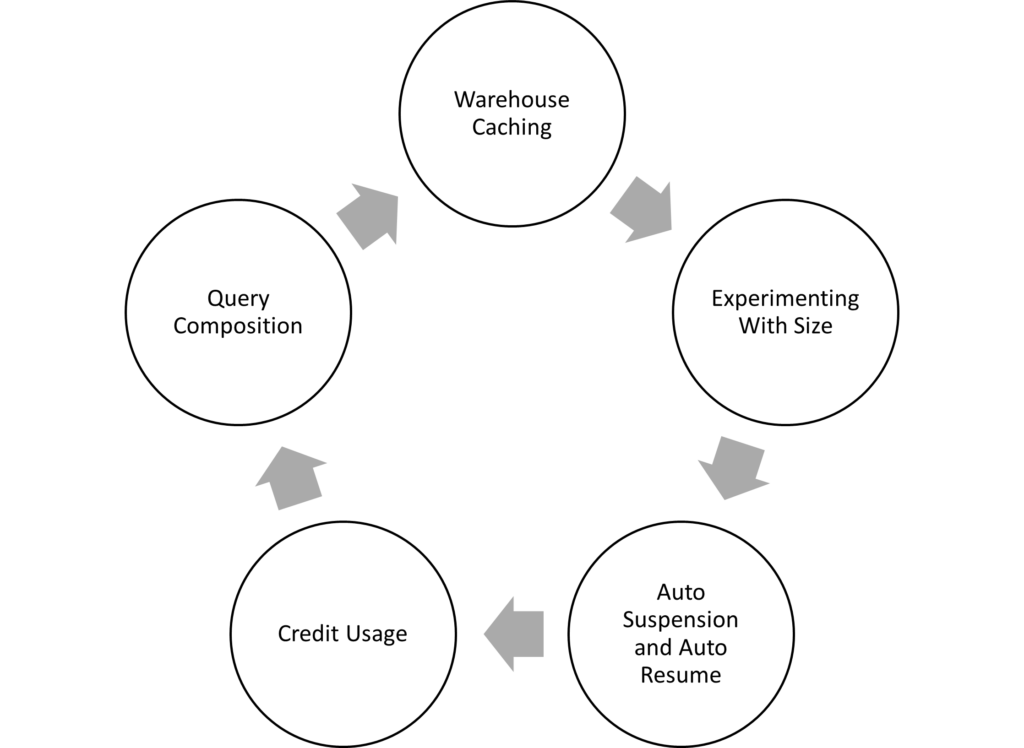This article highlights in general different pointers and best practices with which virtual warehouse can be selected.
Table of Contents
Understanding the Snowflake Best Practices
The crucial factors in effectively and efficiently utilizing warehouses include:
- Experimenting with various query types and warehouse sizes to ascertain the optimal combinations that align with your unique query requirements and workload.
- Avoid fixating solely on warehouse size. Snowflake operates on a per-second billing model, allowing you to utilize larger warehouses (such as Large, X-Large, 2X-Large, etc.) and conveniently suspend them during periods of inactivity.
Credits for warehouses are charged according to:
- The chosen warehouse size.
- The no of clusters utilized (applicable for multi-cluster warehouses).
- The duration for which the compute resources in each cluster are active.
Always check the query composition
Mainly look for
- Size of the data or table being processed or fetched
- Filter and join conditions
Impact of Warehouse Caching
Virtual Warehouse caching definitely helps in query performance but comes with additional cost to maintain caching as we may have to select appropriate virtual warehouse to maintain the cache.
Also cache is dropped when warehouse is suspended. Hence proper selection of warehouse auto suspension time needs to selected.
So, in summary, you should focus on below:



